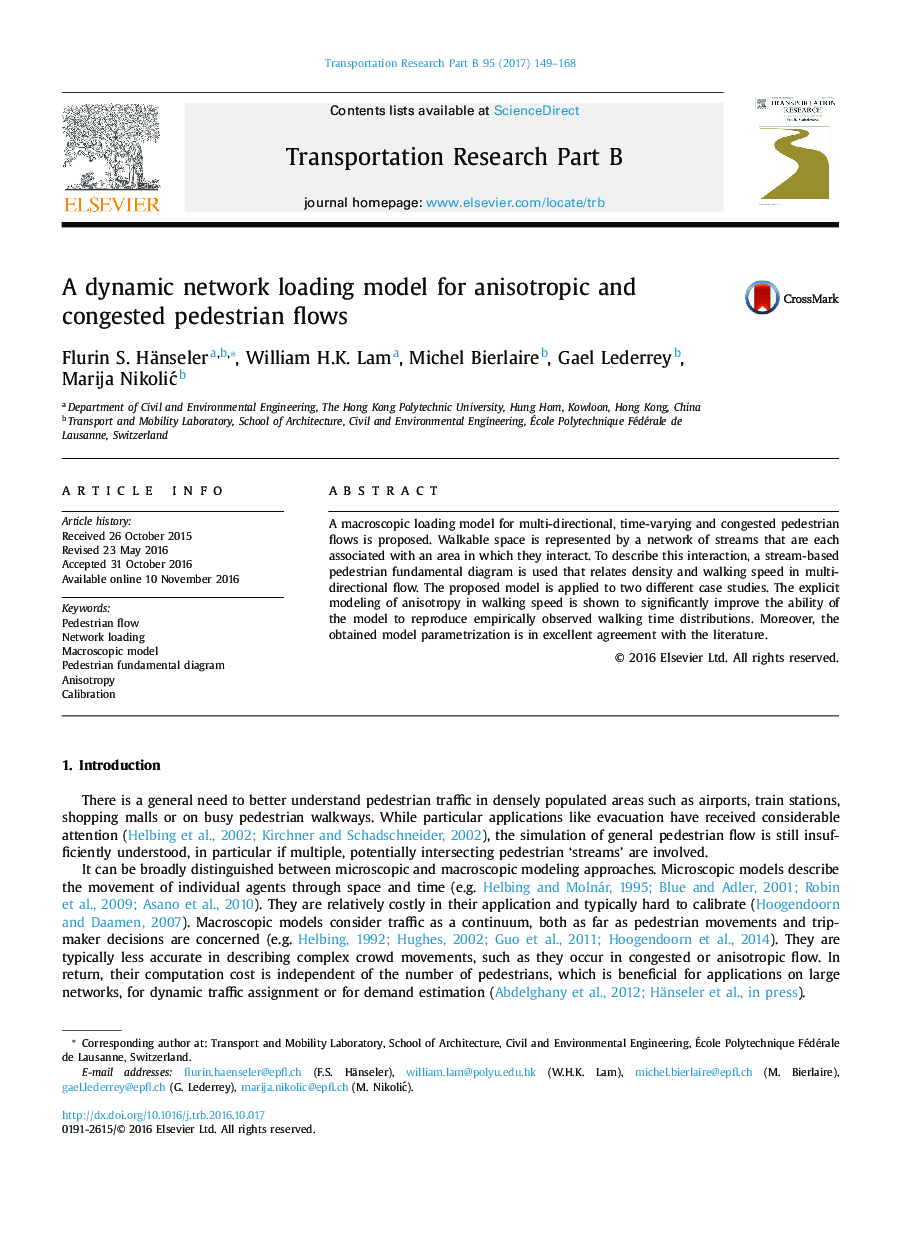| Article ID | Journal | Published Year | Pages | File Type |
|---|---|---|---|---|
| 5127095 | Transportation Research Part B: Methodological | 2017 | 20 Pages |
•A macroscopic loading model for congested, multi-directional pedestrian flow is proposed.•Multi-directional flow is decomposed into a set of interacting pedestrian streams.•The interaction between streams is modeled by an anisotropic fundamental diagram.•A calibration on two real case studies using maximum likelihood estimation is performed.•The explicit modeling of anisotropy is shown to significantly improve the model performance.
A macroscopic loading model for multi-directional, time-varying and congested pedestrian flows is proposed. Walkable space is represented by a network of streams that are each associated with an area in which they interact. To describe this interaction, a stream-based pedestrian fundamental diagram is used that relates density and walking speed in multi-directional flow. The proposed model is applied to two different case studies. The explicit modeling of anisotropy in walking speed is shown to significantly improve the ability of the model to reproduce empirically observed walking time distributions. Moreover, the obtained model parametrization is in excellent agreement with the literature.
